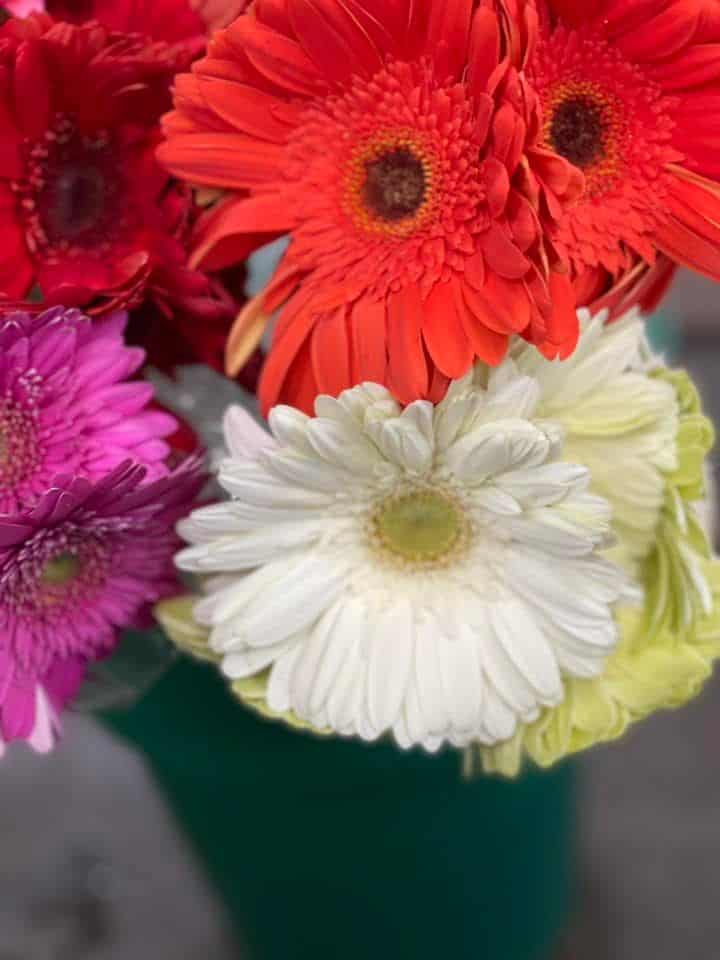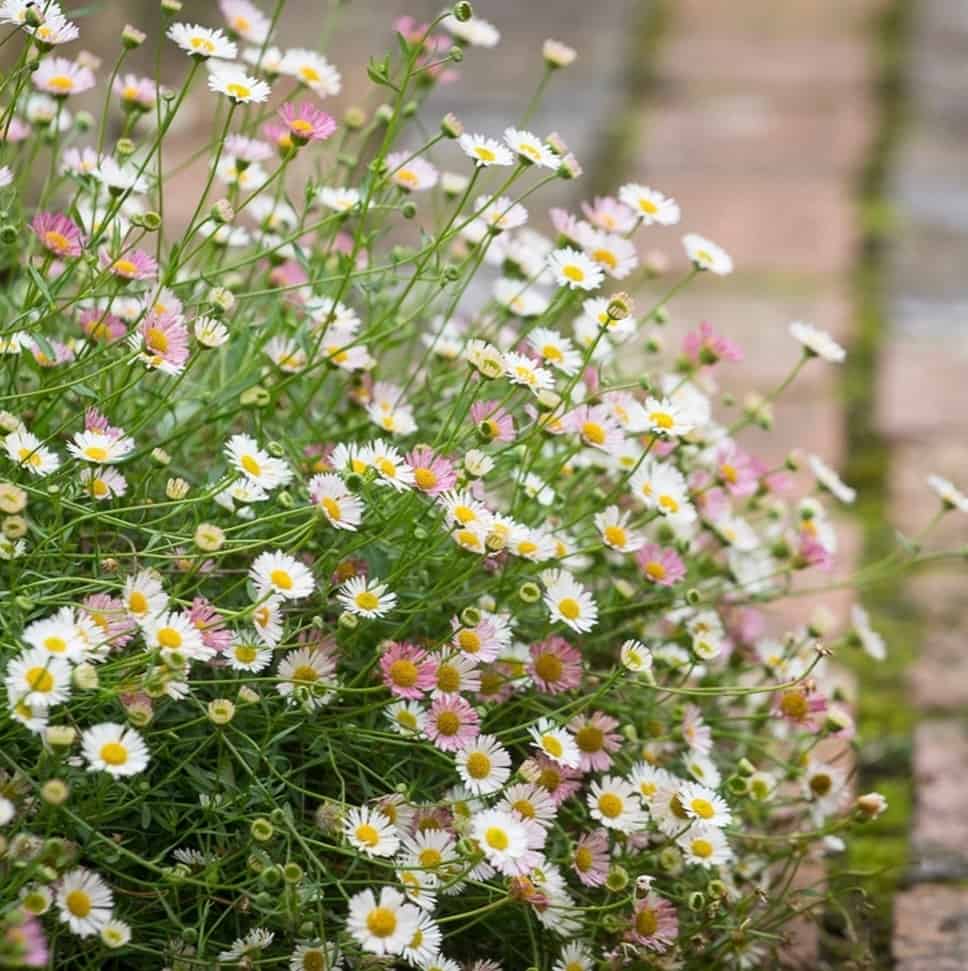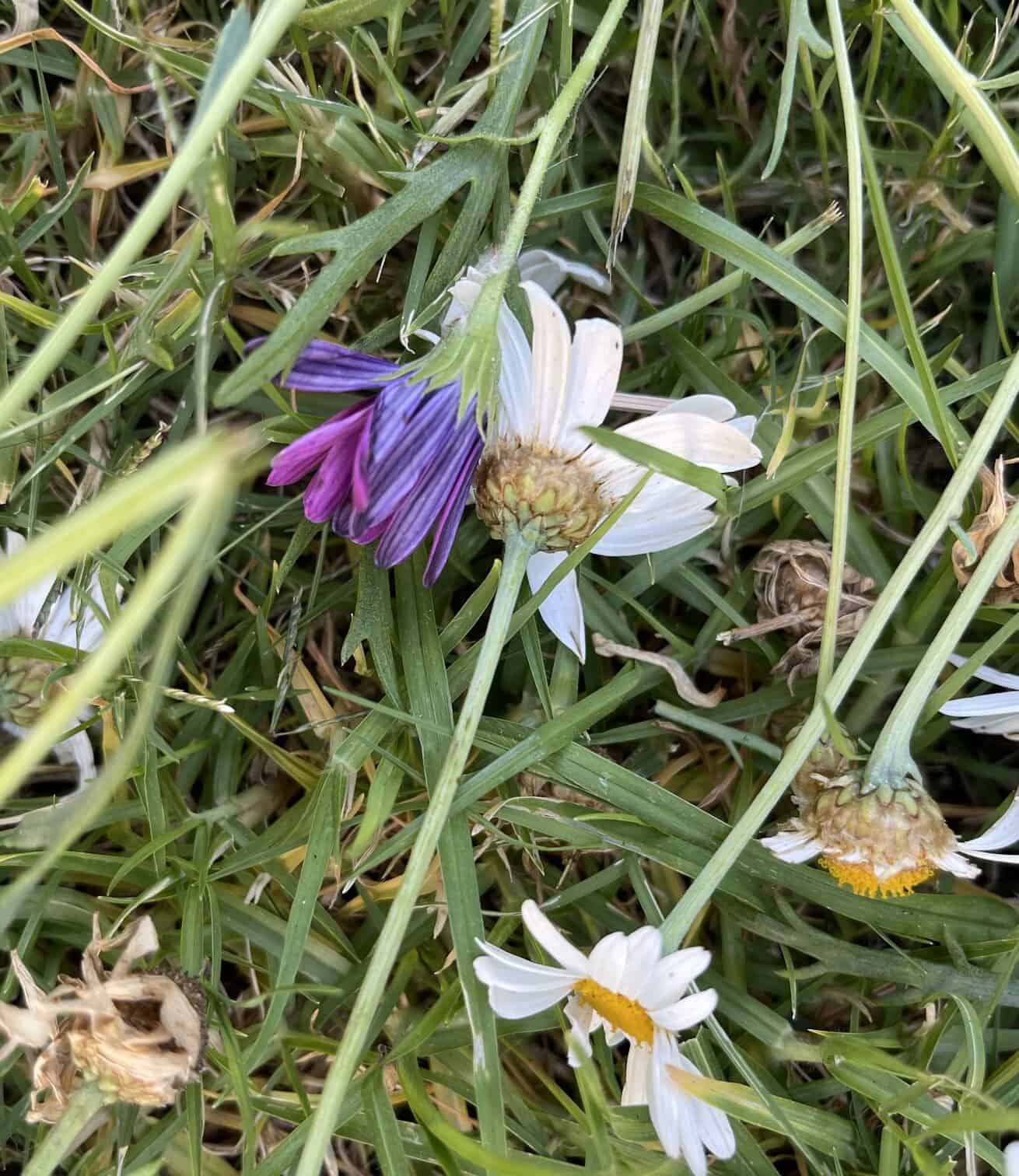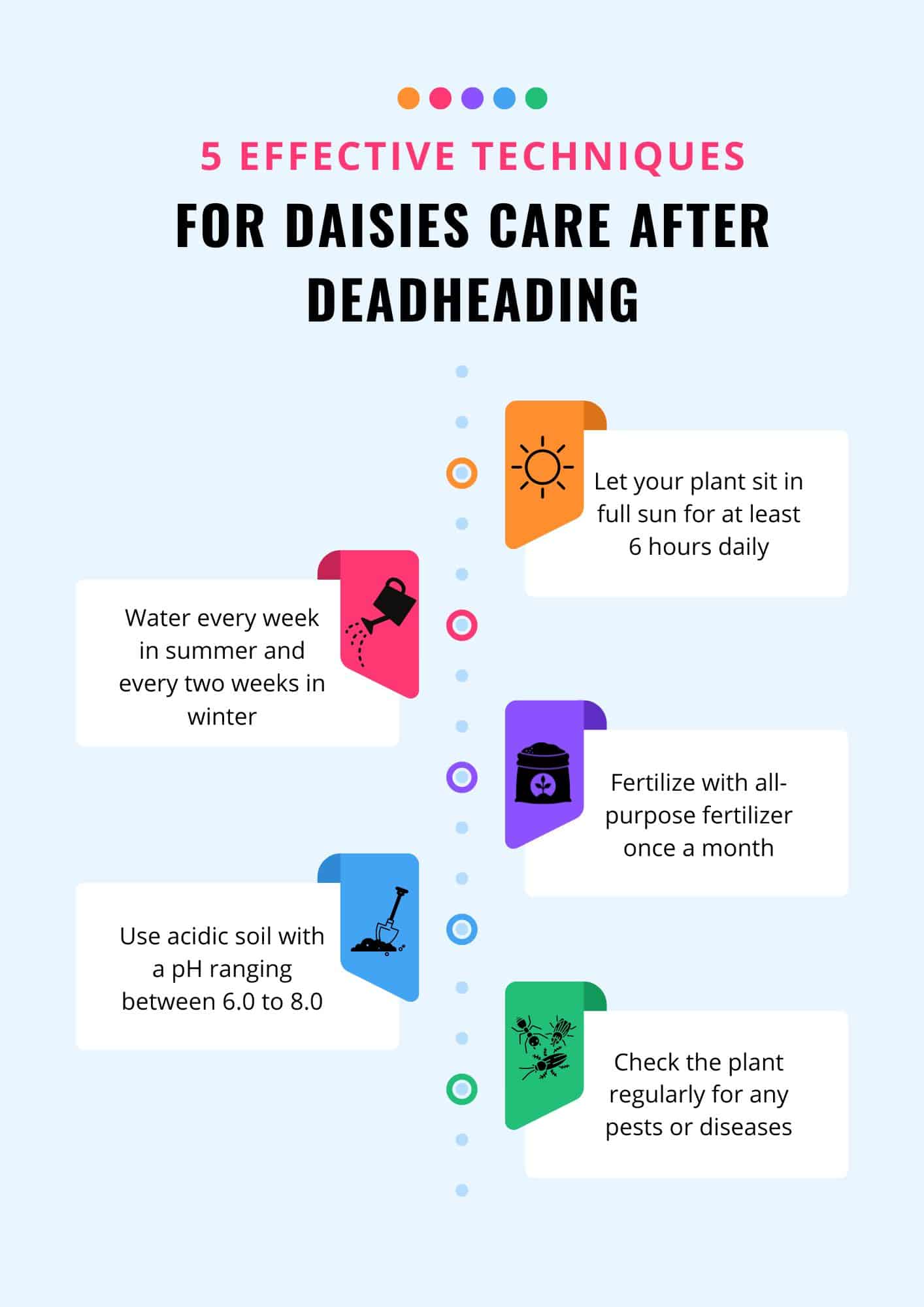Who does not love daisies that bloom for weeks on end? To keep your daisies vigorous and flowering for longer, deadhead them promptly and properly.

You do not have to be a graduate of “Daisy-deadheading University” to be able to deadhead Daisy flowers. It is an easy task, and almost anybody can do it.
Continue reading the article below to find out how you can deadhead Daisies and care for them after deadheading.
Table of Contents Show
Do Daisies Need Deadheading?
You might be wondering if you need to deadhead the Daisies in your garden; well, let me tell you, that is a good idea.
Deadheading the Daisy flower will improve the plant’s overall appearance and also helps promote new growth.
Generally, Daisies need deadheading to improve their appearance and focus their energy on producing new, more beautiful blooms.
If you want your Daisies to produce more prominent blooms, you can deadhead them if they are spent.
Here are some benefits of deadheading Daisies.
- Deadheading spent blooms will significantly improve the aesthetics of your garden.
- The other flowers in the plant will be healthier.
- If you deadhead the flowers in this season, their blooming period can increase in the next season.
- The plant can conserve its energy and distribute it to other required sectors.
- The following flowers will be fuller and prettier.
- It helps reduce debris in the garden.

However, if you want fully matured seeds and let the plant handle things naturally, you might consider not-deadheading the plant.
But it would be best if you were ready for the consequences. Not deadheading the Daisy flower can blemish the overall look of your garden. Also, you may have unwanted Daisies all over your garden in no time.
Almost all the varieties of Daisies do well if you deadhead their spent blooms occasionally.
If the blooms have wilted and are spent, you can pinch them during the plant’s growing seasons, i.e., summer and spring.
When to Deadhead Daisies?
Daisy flowers flaunt a beautiful appearance. Even at the end of their lifeline, the flowers do not look that bad.
They will make you question your decision to deadhead them for sure!
Once you witness the blooms dying back (withering, petals falling off, wilting, etc.), you can deadhead the Daisy blooms.

Look for the following signs to know it is time to deadhead your flower.
- The petals start losing color and thinning on their own.
- They lose their composure and appear like they are out of energy.
- Daisy’s petals start falling off one by one.
- The petals and the flowers as a whole turn brown.
- You stop getting the same vibrance and charm from the flowers as before.
Also, check the flowers for signs of pests and diseases regularly. If your flowers are attacked, you might as well deadhead the blooms as there is no recovery.
How to Deadhead Daisies?
As I mentioned earlier, deadheading Daisies may not seriously threaten your plant.
So, you must be careful throughout the process to avoid making major mistakes.
Materials Required to Deadhead Daisies
Gather the following materials for the deadheading process.
| Materials | Purpose |
|---|---|
| Gardening Mask | Very useful if you are allergic to pollen |
| Basket | To collect snipped flowers |
| Pruning Shears | To snip off the flower |
| Safety Goggles | For extra protection |
| Gardening Gloves | To protect the hands |
| Isopropyl Alcohol | To sterilize the gardening equipment |
After you have amassed the materials, you need to go on with the process.
Steps to Deadhead Daisies
When it comes to deadheading Daisies, it does not matter where they are planted. You will have to follow the same processes for deadheading.
To encourage the plant to bloom next season, you should consider deadheading or pruning them during the first frost.

Deadheading Shasta Daisy, Marguerite Daisy, Oxeye Daisy, and almost all the daisy varieties are not as difficult as you may have imagined.
Let us look at the steps you must follow to successfully deadhead Daisies.
- Check the plant for dead, wilted, brown, and spent flowers.
- Follow the flower stem right to its growing point. Look for the first set of leaves.
- Sterilize all the tools like pruning shears you are about to use for the deadheading process.
- After identifying the stem, cut it right at the growing point. If all the blooms are spent, you can cut the plant entirely.
- If the stems are not so prominent, you can pinch them off using your thumb and forefinger.
- During summer, deadhead the top flowers at their connecting point to the stem. This helps the plant to put energy from seed production to flower production.
Most people prefer deadheading their Daisies during the late fall because the plant can conserve energy for the future production of foliage and flowers in spring and summer.
You can also cut fresh Daisies and give them to someone special.
Select some healthy Daisies and clip the ends at a 45-degree angle. Fill a vase with these lovely flowers to brighten up your home.
Care Tips for Daisies After Deadheading
Deadheading the Daisy flowers does not mean you have done everything for the betterment of the plant.
After successful deadheading, you must ensure the plant does not go through any major stress session.
Follow the tips below to ensure your Daisy plants like Gerbera do not incur any damage due to deadheading.

- Flowering plants like Daisies require full sun for about 6 hours daily to produce beautiful blooms.
- Acidic soil with a pH ranging from 6.0 to 8.0 is suitable for the better growth of post-deadhead Daisy.
- Provide 1 to 2 inches of watering with distilled water every week during summer and once every two weeks during autumn and winter.
- Fertilize the plant with all-purpose liquid fertilizer (10-10-10 for overall growth and 10-16-10 for blooms) once a month for Daisies outdoors.
- Check the flowers regularly for the signs of any anomalies and deadhead them, if any.
- Daisies attract different pests and diseases thanks to their beautiful petals. So, be on guard for plant problems.
You must follow the above care tips and be the best plant parent your plant will ever get.
From Editorial Team
If you have Daisies in your garden, you already have great taste in flowers.
Get great output from your garden or your Daisy plant indoors, get your ‘plant-caring’ boots on, and dive into the process.
Don’t be a lazy Daisy! Good luck!


